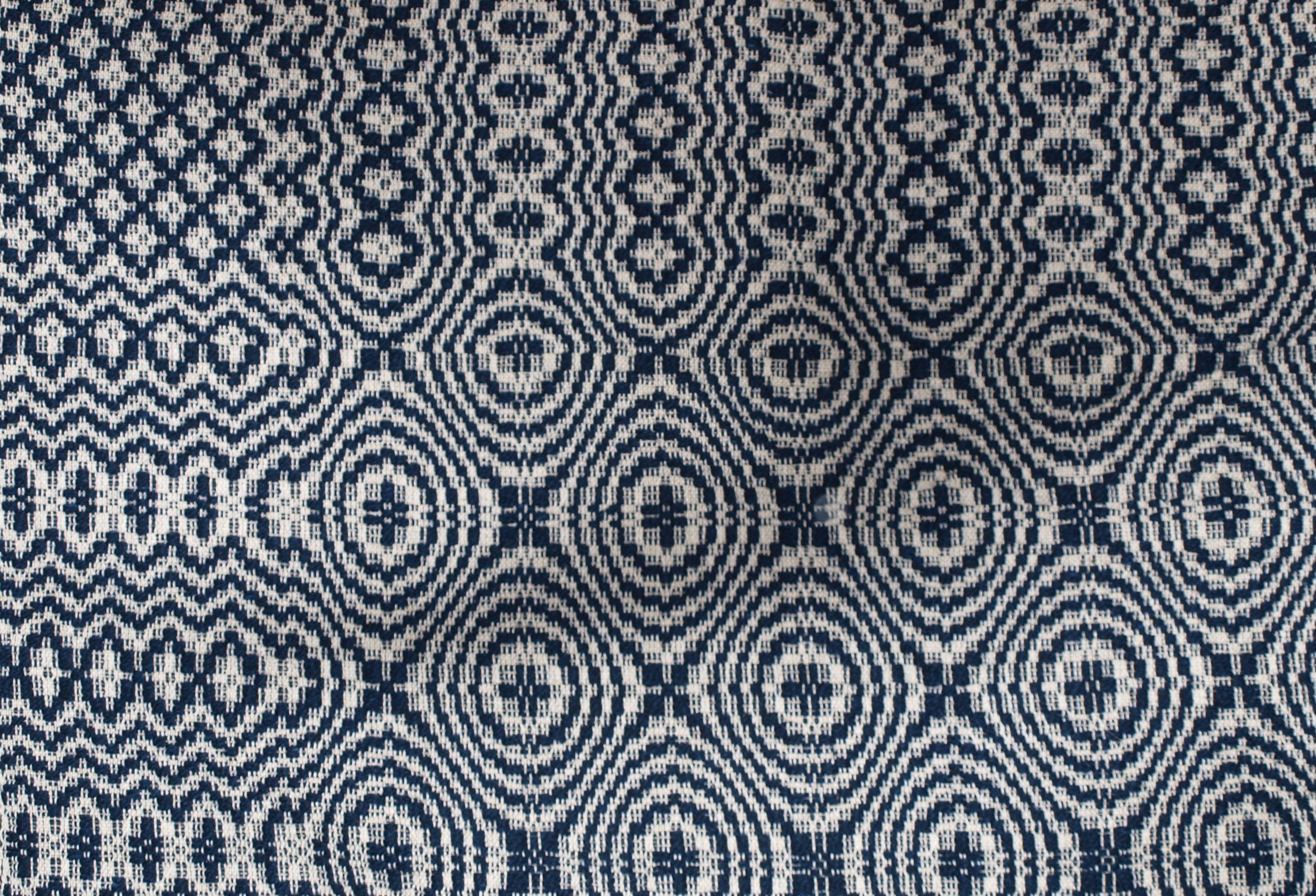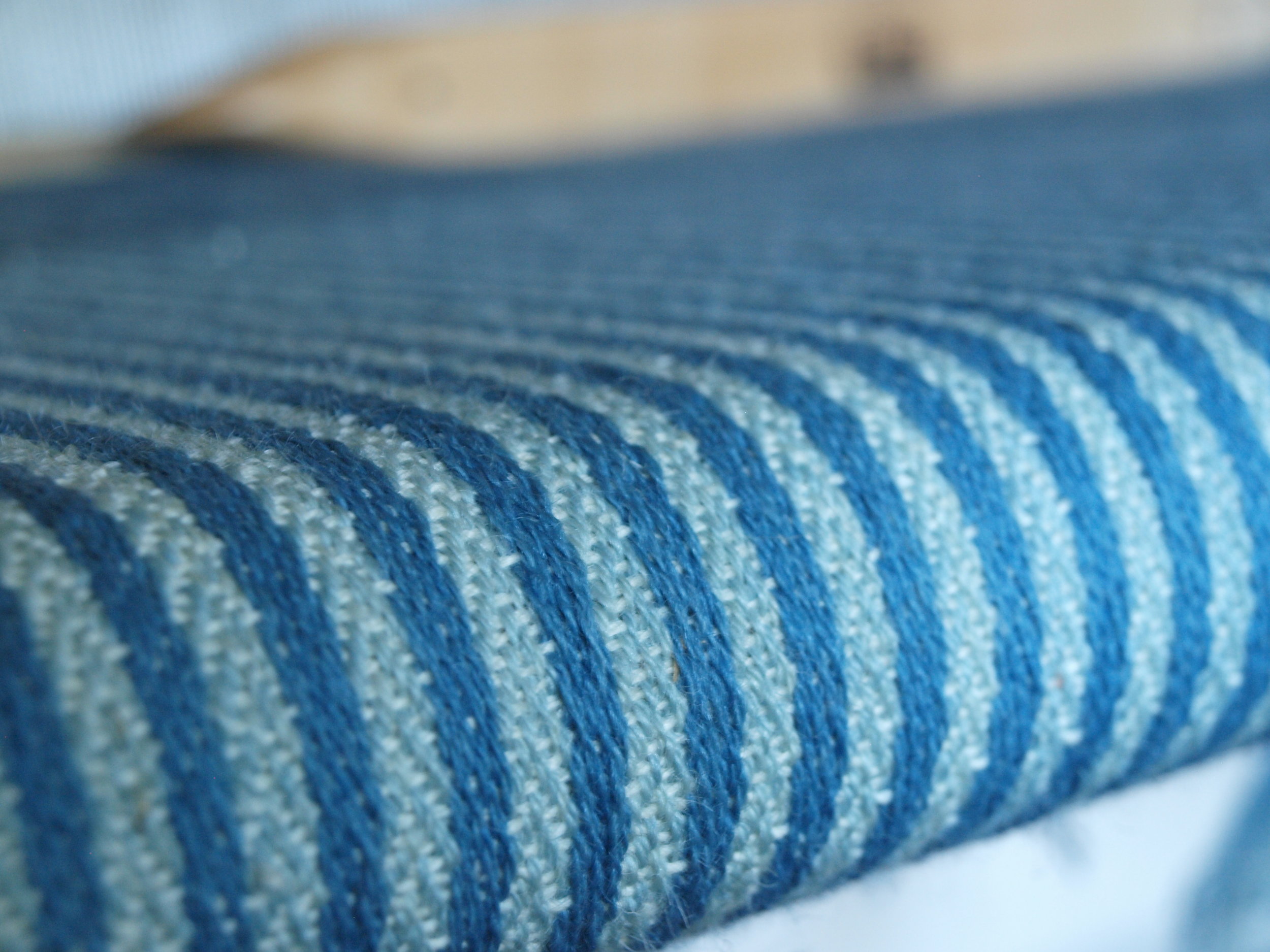Rag Carpets for Montgomery’s Inn
Upper Canada Weaving produced two rag carpets for Montgomery’s Inn in 2018 for the Traveller’s Sitting Room and for the Boys’ Room. There was a period rag carpet in the Boys’ Room that was in poor condition. Montgomery’s Inn wanted to reproduce this carpet so that the period carpet could be preserved in storage. This carpet has a limited number of colours: white, brown and pink. The predominant colour is white with random additions of brown and pink making it a ‘hit and miss’ carpet with a limited colour range. For the carpet for the Travellers’ Sitting Room, we created a more formal pattern based on a rag carpet in the collection of the Royal Ontario Museum. The checkerboard pattern was created by alternating dark and light warp threads.
Rag carpet weaving was prevalent in mid to late nineteenth century Canada. This weave structure was used primarily for carpets in English-speaking Canada and as bed coverings in French-speaking Canada. Many weavers in Canada wove rag carpets for customers. In the mid to late 19th century, rag carpets costed about 12 cents per yard.
The consumer or customer of rag carpets supplied the cotton warp and the rags. This arrangement meant that they took part in the pre-weaving production by collecting cloth from worn clothes, cutting the cloth into strips, joining the strips of cloth together, winding the joined strips into balls. The customer then brought the balls of rags to the weaver who wound them on a rag shuttle for weaving.
Rag carpets are representative of the Ontario nineteenth century household economy, small scale industry and interior aesthetic. They were also a way to get value from old clothes by making use of the household economy.
In the 19th century practice of customer involvement in textile production, visitors to Montgomery’s Inn joined the strips of fabric together. The joined strips were wound into balls and then used to weave the carpets.






































![IMG_7997[1].JPG](https://images.squarespace-cdn.com/content/v1/5a9b2e1b697a98dcc6eea346/1593722667215-ITVN7OVWVG8EZ9YONXWA/IMG_7997%5B1%5D.JPG)


























